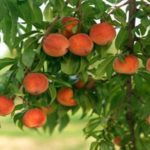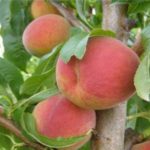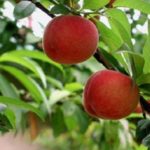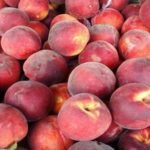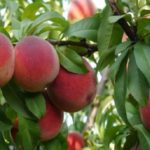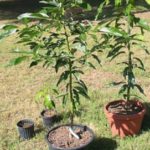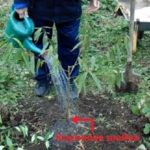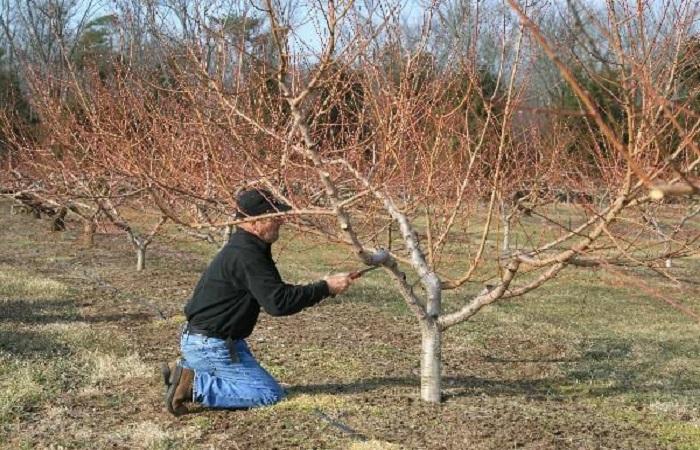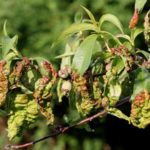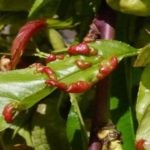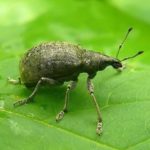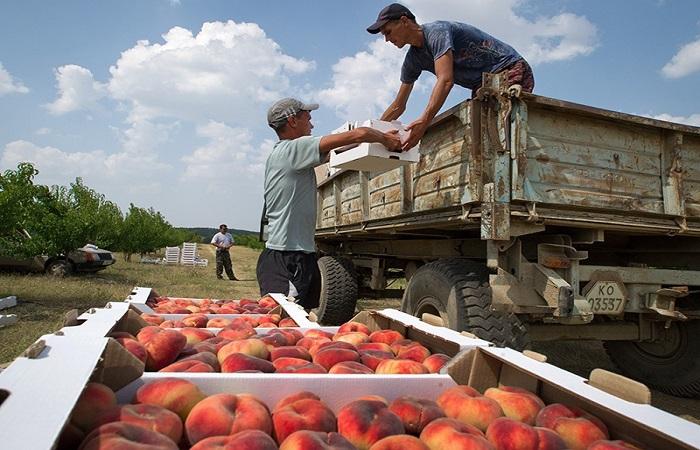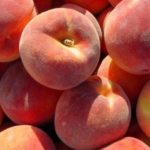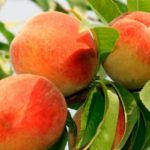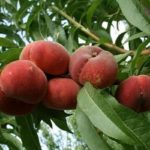The Cardinal peach variety has become popular due to its early ripening, rich taste of the fruit and strong aroma. It is grown in different parts of the country. Let's consider the characteristics and description of the variety, advantages and disadvantages, how to plant plants in a garden plot and care for them, how to deal with pests and diseases, how to collect fruits and store them.
History of origin
The Cardinal variety was developed in the USA and became popular in Russia, but is not registered in the State Register. In 2013, it was included in the Register of Ukraine; the originator is the Nikitsky Botanical Garden.
Description and characteristics of Cardinal
Cardinal is a mid-early variety, the plant is medium-sized, the crown is round, slightly raised, and can be thickened. Tree height is 2-2.5 m. Peach fruits are round, slightly flattened on the sides, weigh on average 140-150 cm. The color of the skin is yellow, with a blush, the taste of the fruit is bright, sweetness and sourness are harmoniously combined, the aroma is strong, the pulp is juicy . The stone is small and can be easily separated from the pulp.
Positive and negative sides of peach
Advantages of the Cardinal variety:
- self-fertility;
- immunity to powdery mildew;
- precocity;
- transportability of fruits;
- the versatility of using fruits - they can be eaten fresh, canned, or made into compotes.
Disadvantages of the variety: average cold resistance, susceptible to leaf curl.
Planting and caring for the variety
The agricultural technology of the Cardinal variety does not differ from the agricultural technology of other crop varieties. Peach is considered a high-maintenance and heat-loving plant, so the main attention should be paid to choosing the right place for planting in order to protect it from cold and freezing. For the peach, you should choose a place sheltered from the winds, near a high fence or building, so that they cover the tree from the wind.
The soil must be fertile, loose and fertilized. Before planting seedlings, humus and ash should be added to the planting holes and mixed with soil.
The peach planting scheme is as follows: in a row between neighboring trees, you need to maintain a distance of 3-4 m so that when they grow, they do not shade each other.
Before planting, the roots of the seedlings are soaked in a solution of a growth stimulator for a day, and the dry ends of the roots are trimmed. The seedlings are buried up to the root collar, watered and the root zone is covered with straw, old hay, and sawdust. Mulch helps retain moisture and softness of the soil, which is especially important in the southern climate. Mulch also plays another important role - it inhibits the growth of weeds.
Water the Cardinal peach frequently in the first year, especially until it takes root. Water should be poured under the roots or into irrigation ditches. If there is no mulch, after each watering, when the soil dries out a little, loosen it.
Trees are fed, starting from the second year, 3 times a season: before the leaves begin to bloom, after flowering and a month before fruiting begins. First, the peach is fed with nitrogen, then phosphorus and potassium fertilizers. It is convenient to combine application with watering, so that fertilizers become better available to plants.
Form the crown of the Cardinal peach in the form of a bowl. The shape allows the middle of the crown to be well illuminated and ventilated, promotes the formation of flower buds, that is, more abundant flowering and fruiting.
Disease and pest control
In early spring and before the onset of cold weather, the trunks and lower parts of the branches should be whitened with lime with the addition of vitriol or insecticide to prevent the appearance of pests. Diseases are combated by using preventive sprays before the time when signs of underlying diseases may appear. If the disease has already appeared, treatment should be carried out using a therapeutic dose. Leaf curl needs to be combated using chemicals; most likely, you will have to treat it at least 2 times.
In the fall, you need to collect all the fallen leaves and pruned branches, take them out of the area and burn them. You cannot compost them or make mulch out of them. Ash after combustion can be used as a natural fertilizer for all crops.
Collection and storage
The first ripe peaches can be picked after July 10th. The fruits hold well on the branches and do not fall off after ripening. They need to be collected carefully; broken and bruised fruits are not stored at all. For long-term storage, you need to select only clean, slightly unripe fruits without traces of diseases and pests. Peaches are stored in a cool, dry place, in shallow boxes with no more than 2 layers. Light plastic boxes with a capacity of up to 15 kg are also suitable for transportation.
From overripe and broken fruits you can prepare various preparations for the winter: juices, canned whole fruits, compotes, jam. The shelf life of such preparations is 1 year.
Cardinal peach varieties are grown in the southern and central regions of Russia. In more northern regions, planting is problematic, since the winter hardiness of the variety is average. It is characterized by productivity and stability of fruiting. Does not require special cultivation techniques. An easy-to-care variety, well suited for growing on private farms.

